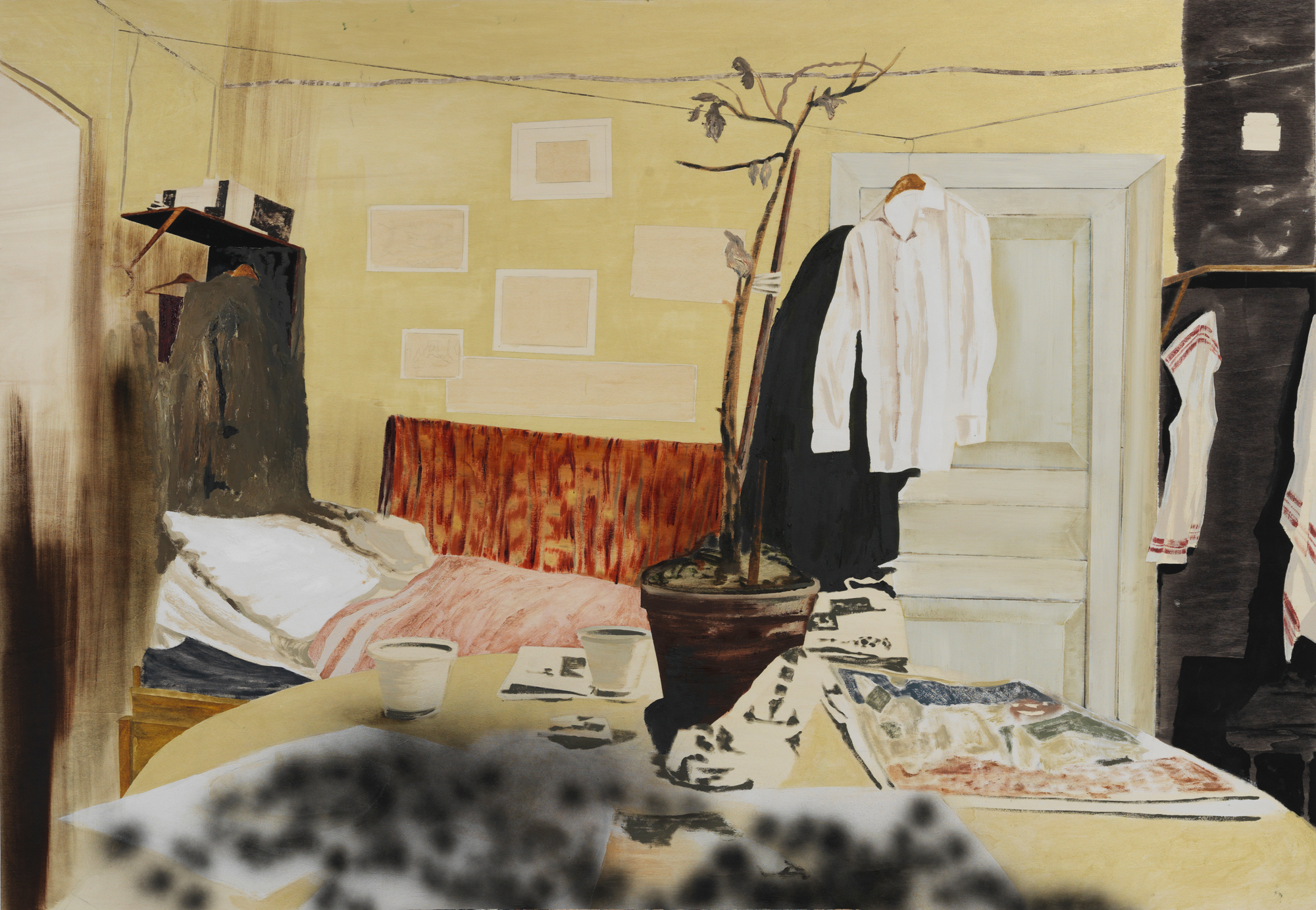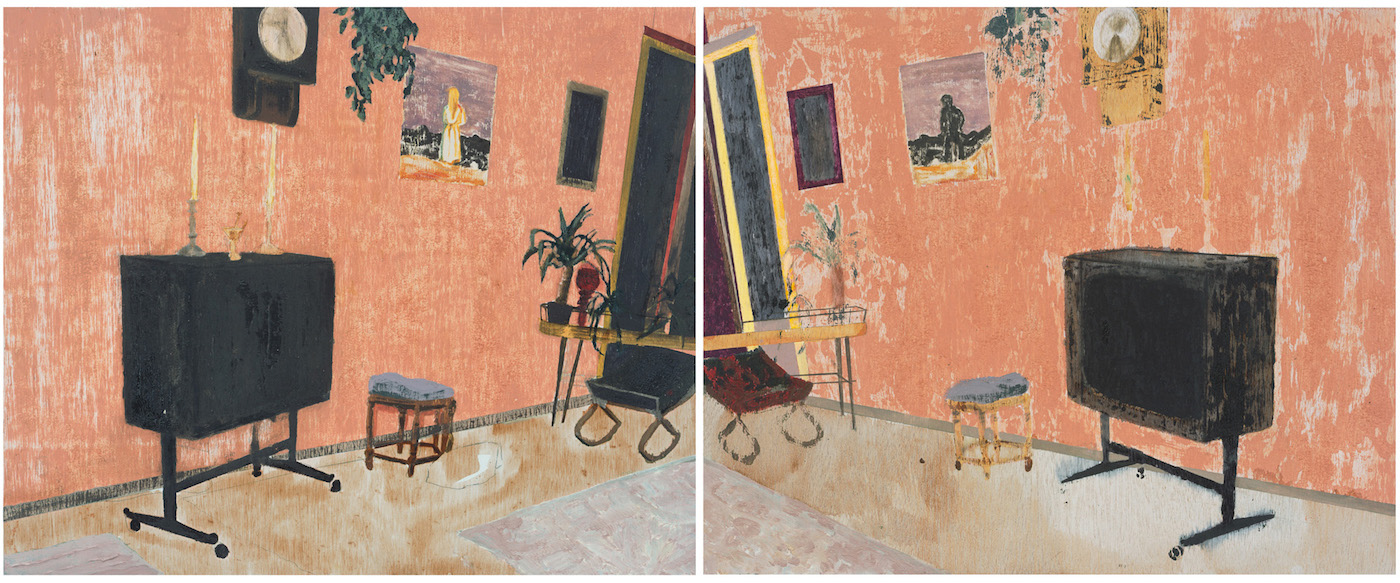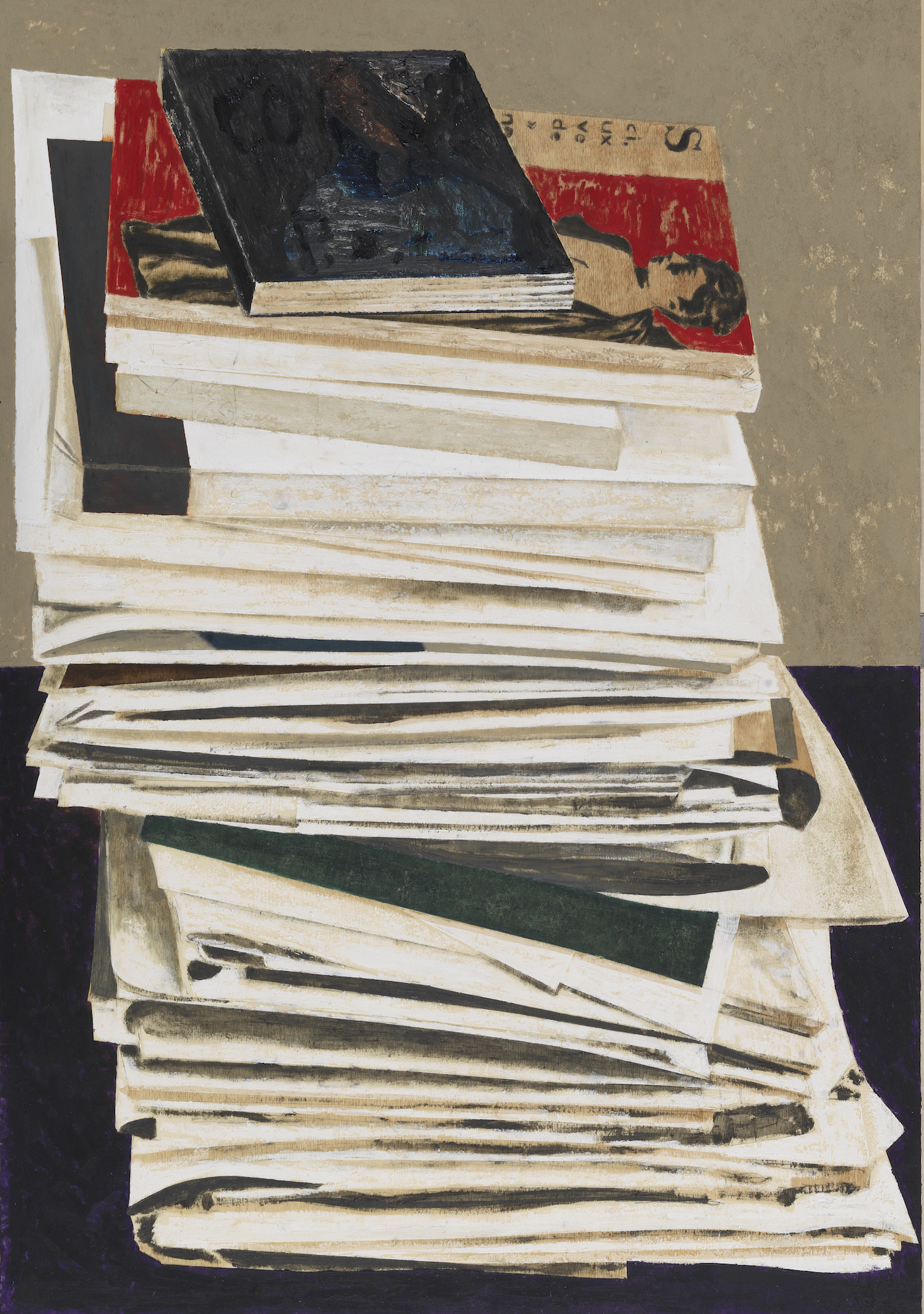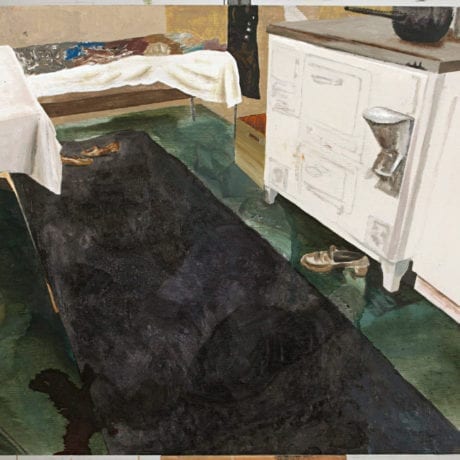
A stack of books. A photograph pinned to the wall. A Dutch Renaissance painting. A quilt. A teacup. A shirt; crumpled, hanging. All these everyday items, collaged from her vast collected archives and painted by the artist’s hand, find the comfiest home in Mamma Andersson’s fictionalized memories, scenes set for some uncanny action or some melancholy folklore story. The Swedish-raised artist has painted commissions for Nobel Prize winners, for gallery shows and museums, but mostly, she paints for her own pleasure, the pleasure of creating a suspended world, frozen in time, whimsical—looking at her paintings evokes the same feeling you get on a Sunday when it’s raining outside and you’re stuck in a good book, under the duvet. That’s not to say you feel safe in them—they are certainly edged with darkness—as Kevin Moore (who has curated a new exhibition of Mamma Andersson’s work at FotoFocus this year in Cincinnati) puts it, they strike a “greater chord of realism than objective order”.
There’s said to be an ongoing tension in your work between the outside and inside—landscapes and interiors, also present in Memory Banks. Where do you feel most comfortable?
As a young artist, I painted a lot of landscapes in nature. Landscape painting as a genre interests me. I grew up in northern Sweden in a rather small town, spending all my free time outdoors hiking and skiing. This has probably shaped me in an unconscious way. But I must admit that the play of interiors, the indoor scene, also interests me. The claustrophobic space, the home and the idea of a home. I feel equally uncomfortable and comfortable in both situations. For me, it is more about a mental space, irrespective of whether it’s a landscape or an interior.

Memory Banks installation view at Contemporary Arts Center, Cincinnati. Courtesy CAC © Tony Walsh
You’re also known as a vivid storyteller. Why did you decide to paint?
I decided early on that I wanted to work with film and thought that’s what I would do in life. Only a few years ago did I realize it was not turning out that way. I do consider my paintings much like film sequences or theatre scenes. The difference is the storytelling itself. In a painting there is no beginning or end, a moment is frozen.

I’m very drawn to the seeming comfort and cosiness of your interior scenes in particular, the art and the books and the piles of paper. In his introduction to your book Kevin Moore says your paintings feel “retroactive”—that in a sense this is all an archive of human history. How do you feel about that? Are you very sentimental about things?
I don’t want to be sentimental, it means something quite negative to me. However, I am interested in time and perishability, the prerequisite for being human regardless of time.
I am interested in art history, in fact, in all history, it makes us understand our present time, here and now. I feel skeptical about our time, it is often sloppy and ugly, very commercial. The retroactive in my world of imagery are echoes from my own life and imagination about the time before my own existence. I have always collected cutouts from newspapers, magazines and books, etc. At the exhibition in Cincinnati, I show a small selection of my “archives”. The oldest cutout is from a monthly magazine in the late sixties when I was a child.
”I feel skeptical about our time, it is often sloppy and ugly, very commercial”

Another thing that’s often mentioned in relation to your work is your technique. Can you tell me how you worked with photography for Memory Banks, and what your relationship to photography is today?
I rarely take my own photographs. I mostly get them from other sources, and recycle or sample them in combination with one another. The ones I choose don’t guide me, they just direct me into myself. They are almost never in colour, the more obscure and difficult to interpret the better. Painting for me is about material and technique. It is the very essence of creation, the passion of wanting to be an artist.
”Painting for me is about material and technique. It is the very essence of creation, the passion of wanting to be an artist”

Memory Banks installation view at Contemporary Arts Center, Cincinnati. Courtesy CAC © Tony Walsh
Your new book and show (at the Contemporary Arts Center, Cincinnati) are both titled Memory Banks, and include your seminal work About a Girl. Can you tell me more about this painting and the nine women who sit at the table in it?
The title of the painting came mainly from a Nirvana song About a Girl. But also a song remixed by Malcolm McLaren, About Her. To me, the painting is a tribute to girls. On the wall above the group of girls hangs a picture of Snow White and a Japanese woodcut of a Geisha.
Several of the girls look straight at the viewer and expect to be taken seriously. Technically I was trying to paint all of their hair together so that they almost became one person, whilst also achieving an impression of the contours of the individuals in the deep black colour.
Mamma Andersson: Memory Banks
Until 10 February at Contemporary Arts Center, Cincinnati
VISIT WEBSITE





